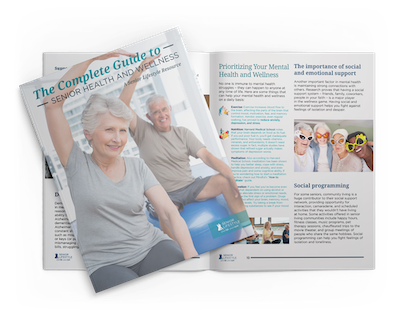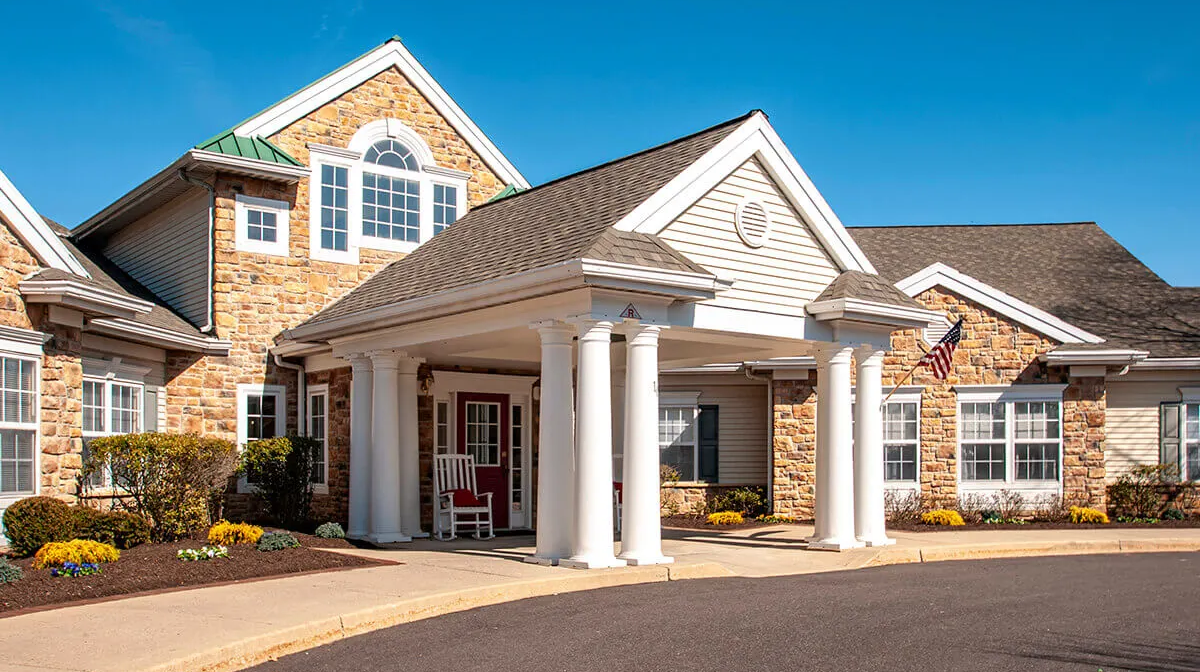When a loved one moves into a senior living community, families know how important it is that their unique routines, habits, and preferences will be honored. At Senior Lifestyle, we know that no two people... The post Boosting Confidence Through Personal Care Plans for Seniors appeared first on Senior Lifestyle.
When a loved one moves into a senior living community, families know how important it is that their unique routines, habits, and preferences will be honored. At Senior Lifestyle, we know that no two people are alike. That’s what makes our communities vibrant and why we keep personalized care plans for seniors at the core of what we do.
Personalized senior care plans are blueprints that help our team better understand not only the health and safety preferences of each senior, but also the little details that make life more meaningful. With the right plan in place, residents feel supported, confident, and empowered to live the lifestyle they desire.

Download The Complete Guide to Senior Health and Wellness
The key to living your “best life” as you age? Prioritizing your health. Check out our eBook, “The Complete Guide to Senior Health and Wellness,” to learn about the most important aspects of senior health and wellness.
Download the GuideSusan Tomalia, Divisional Director of Health & Wellness at Senior Lifestyle, explains how personal care plans work and why they’re so important for seniors and their families.
What Is a Personal Senior Care Plan?
When asked to define a care plan, Tomalia puts it simply: “A care plan is a roadmap for how team members will support a resident’s daily routine, health, and well-being. It covers several areas of daily life, health, and safety.”
That might mean keeping track of medications, noting how a senior likes to start their morning, or remembering favorite pastimes that delight them. It’s about honoring the whole person, not just their care considerations.
Why Personal Care Plans Are Not One-Size-Fits-All
Families should be assured that their loved one will get a plan that fits them to a T, not a one-size-fits-all plan. This is because every individual is unique, which encourages important details that make life comfortable and meaningful.
“A one-size-fits-all approach overlooks the different requirements that each resident has, which could lead to gaps in care, safety risks, or reduced quality of care,” she says.
Personalized plans close those gaps by making sure nothing is overlooked, whether it’s a health requirement, a personal routine, or a cherished hobby.
Who Creates Personal Care Plans?
Our whole team is passionate about planning care for our residents. The Health and Wellness Director usually takes the lead, but other professionals, such as a Resident Care Coordinator, Embrace Memory Care Director, or nursing supervisor, may also be involved.
Most importantly, residents and their families are active participants. “When developing a service plan, it’s important to listen and pull together the resident’s preferences and potential risks into a practical, actionable guide for team members,” Tomalia explains.
That’s where families can make a big difference. Sharing stories about routines, hobbies, favorite foods, or even how a loved one enjoys their coffee helps team members see and celebrate the person behind the plan.
Among the questions Senior Lifestyle asks when making a personalized care plan, Tomalia said, are:
- What time does your loved one get up or like to go to bed?
- How do they like to dress?
- Are they social or do they prefer privacy?
- What are their coping strategies?
- What is a source of comfort?
- What is their spiritual background?
- What are their food preferences?
These questions and more are focused on ensuring the comfort of your loved one.
How Personal Care Plans for Seniors Support Independence
One of the major benefits of a personalized care plan is that it respects what a resident can do for themselves.
“Instead of team members taking over, we encourage residents to stay involved in their own care,” Tomalia says. This might mean having someone choose their own clothes, supporting them with dressing, or participating in daily tasks.
Maintaining independence, even in small ways, helps residents feel confident and ensures that they keep, and even strengthen, the skills they already possess.
Beyond the Basics: Caring for the Whole Person
Personalized care plans also include strategies for emotional and social well-being, such as:
- Comfort measures for times of uncertainty
- Approaches that build trust and reduce stress
- Encouraging participation in clubs, events, or group experiences
- Exercise programs to stay active, reduce falls, and connect with others
Tomalia says these additional steps are important because the resident’s overall wellbeing is around their evolving needs, routines, and comfort. This makes residents feel balanced, engaged, and supported in every part of life – not just their health.
A Story That Shows the Difference
Tomalia recalls one interaction that helped a senior feel more independent. One resident was naturally a late riser. Without a care plan, team members might have woken him at 7 a.m. and quickly dressed him, which would have caused frustration.
With a personalized plan, team members instead allowed him to wake up later, asked what he wanted to wear, and gave him the chance to participate in getting dressed.
“The difference was remarkable,” Tomalia recalls. “He felt respected and more confident in his daily life.”
Keeping Personalized Care Plans Up to Date
Life changes, and so do care requirements. That’s why care plans are reviewed and updated often. Typically, they’re revisited when they first move in, 30 days later, and then every six months. But anytime there’s a health change, the plan is adjusted right away.
“Abilities can increase or decrease, and safety requirements can change after something like a fall,” Tomalia explains. “Updating the plan ensures care is always the right fit.”
She said the care team is best at knowing the residents’ requirements. As adjustments are needed, changes can be made to get the right fit for each senior. Families are also a key part of these changes, and communication is kept constant to make sure a senior is getting the care to make them comfortable and happy.
Advice for Families Starting the Process
If you’re beginning to create a care plan for your loved one, Tomalia’s advice is simple: Be open and share everything you can.
“Tell us about routines, hobbies, likes and dislikes. Even small details matter,” she says. Favorite meals, music, TV shows, or clothing preferences assist team members to create a plan that feels true to the person you love.
She also emphasizes honesty. “The more we know, the better we can plan for that person’s preferences,” she adds. Families are invited into the process, and are essential to it, too.
“Our families are our partners, not bystanders, as they are the senior’s advocate and bring another layer of perspective,” Tomalia says. “Meeting on a regular basis with the families helps us care well for their loved one.”
Building Confidence Through Personalized Care
At Senior Lifestyle, we see personalized care plans as a way to honor individuality. These plans of course place health and safety front and center, but they go beyond that. They’re also about creating a place where residents feel capable, respected, and truly at home.
When care reflects the person, confidence grows. For families, knowing that loved ones are cared for in a way that truly fits who they are brings peace of mind.
When you visit a Senior Lifestyle community, you’ll see the benefits of personalized care for yourself. Whether you’re looking for Independent Living, Assisted Living, or personalized Memory Care in our Embrace Neighborhoods, you’ll find a place where comfort, care, and connection come together.
Find out more about Senior Lifestyle or schedule a visit today!
The post Boosting Confidence Through Personal Care Plans for Seniors appeared first on Senior Lifestyle.









